
The late, great screenwriter and novelist William Goldman famously quipped, “Nobody knows anything… Not one person in the entire motion picture field knows for a certainty what’s going to work. Every time out it’s a guess and, if you’re lucky, an educated one.” Much the same is true with social media marketing: Nobody knows anything, and every time out it’s a guess. But that’s okay, because social media is about leveling the playing field, providing reach and data previously available only to the cognoscenti. Now, enthusiasts of all stripes who have immersed themselves in the business of social media are proving all you need to succeed is determination, brains, and a smartphone.
Nothing is that easy, of course, and none of this is meant to demean the skill it takes to create a memorable social media campaign or negate the value of the terabytes of data instantly available to us in the digital environment. If anything, these tools have brought out the inner marketer in millions of people who never knew they had an inner marketer. At the same time, the milieu provides an inimitably rich environment where professional creatives may indulge the extremes of their intelligence in daily warfare for the hearts and minds of the masses using a fast-moving tableau of created content.
The potential payoff is incalculable, with people across the spectrum primed for social interaction. According to a 2017 survey conducted by social media management provider Sprout Social, “More than half of buyers of all ages—Millennials (58.9%), Gen Xers (50.4%) and Baby Boomers (55%)—said they tend to follow a brand on social media before purchasing a product. When a customer had a positive interaction with a brand, 71 percent of respondents said they were more likely to buy from that company, with Millennials more likely than other generations to spend with a brand after a positive social exchange.”
We spoke to a wide variety of professionals both within and outside the cannabis sector who use social media platforms, usually daily, to extend their brand reach, gather data, drive sales, interact with consumers and fans, or all the above. Social media is always on their minds.
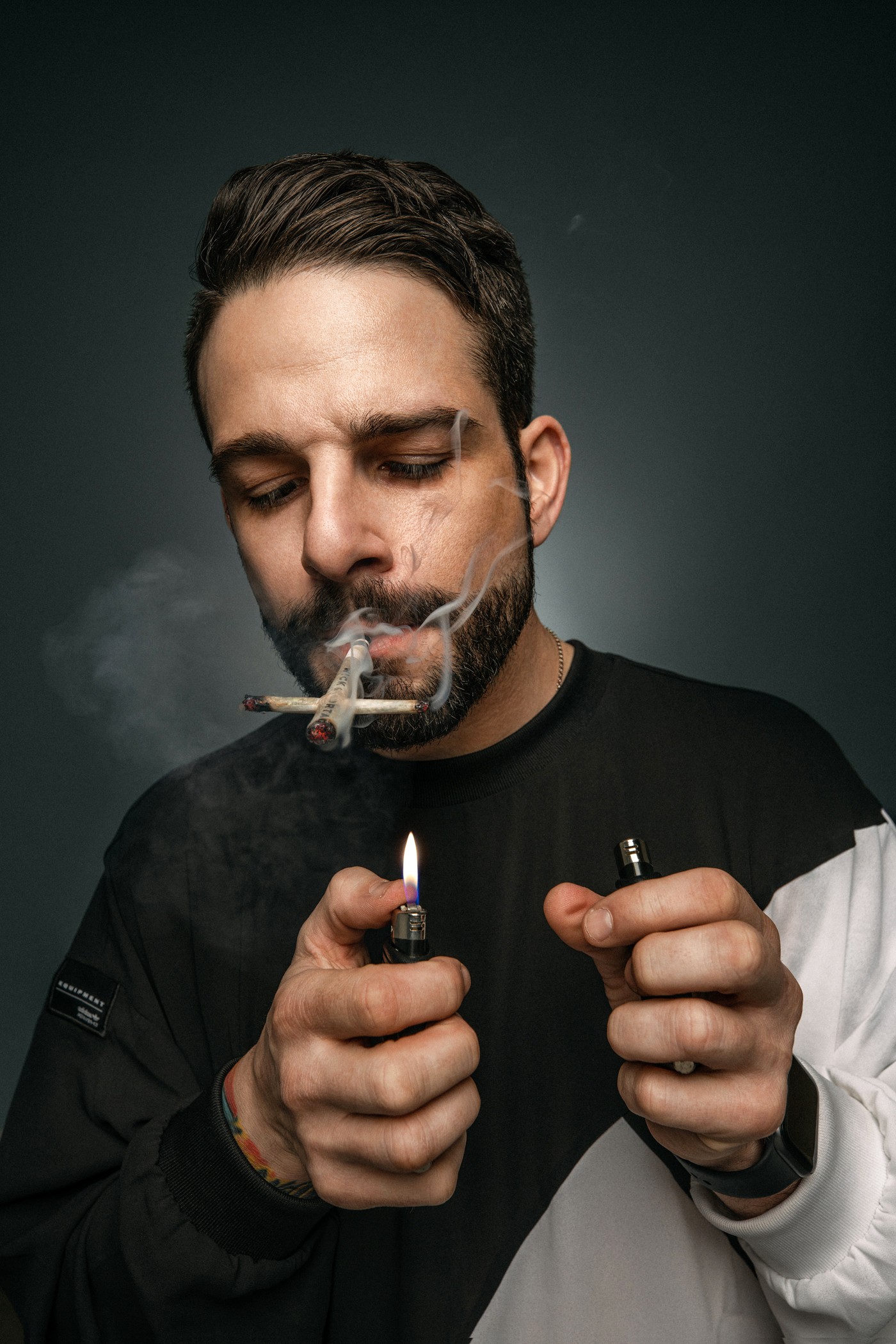
Consistency and work
“It’s one thing to have access to distribution and relationships and connections, but if you want a brand that is not only in stores but is purchased by many, there’s some work to do,” said Jared Mirsky, founder of branding firm Wick & Mortar. “If you don’t have the right budget to invest in social media marketing, then you might as well just do it yourself. [But] if you’re going do it yourself do it right, because people who don’t understand your brand well will create what’s called bipolar branding, where you’re establishing mixed messages.”

Cost and control are the main reasons people go it alone with social marketing. Hashish producer and educator Frenchy Cannoli is one such intrepid self-marketer who uses any medium available to him. “We are a small, artisanal, traditional hashish producer,” he said. “Our work is very hands-on, and there is something about traditional hashish that evokes a primordial response in humans. Even non-smokers love to observe a stretching ball of traditional cannabis resin. Since our work is visual, Instagram is our favorite social media platform. That said, we use Facebook quite a bit, and LinkedIn has proven to be a good way to network with professionals in the cannabis industry.”
Jaana Prall, a freelance public relations consultant, works with social media teams to identify strategies for customer engagement and retention. “Engaging with current customers is about keeping the conversation going, adding new perspectives, novel content, and sharing fresh, relevant content in real-time,” she said. “Reaching out to new customers is about connecting and identifying a need or shared interest.
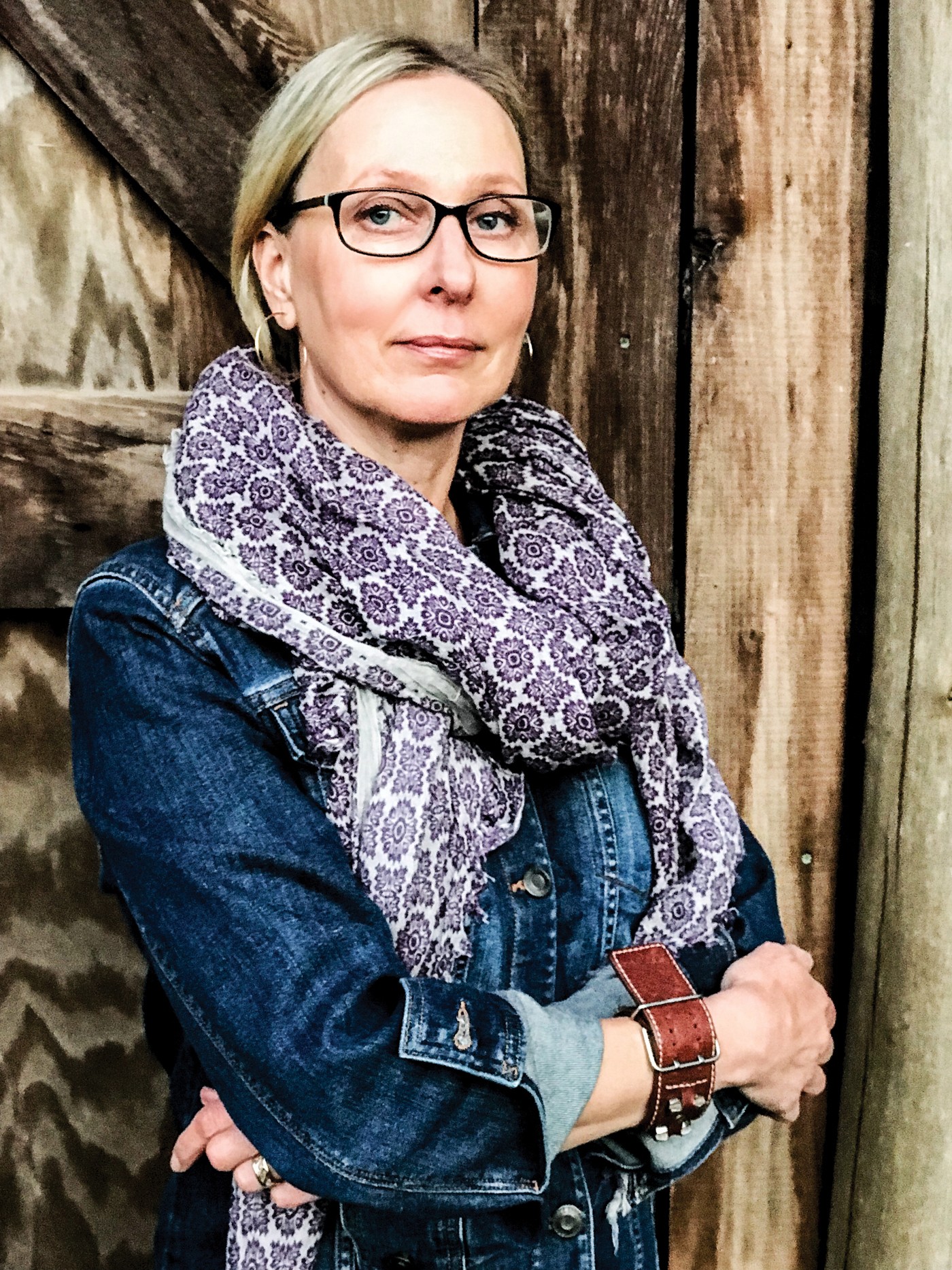
“Identifying the micro and macro influencers that align with my client’s brand is the first priority, and then pushing the envelope and serving up content that’s ‘beyond trend’ is the next step,” she added. “I always tell the brands I work with to keep it authentic. Nothing sinks a social account faster than a company trying to be something they’re not. Modern social media users are savvy. They see right through that stuff. They want honest, real, relatable content.”
One of her clients is Cannabis Club TV (CCTV), a Direct Out of Home (DOOH) and Over the Top TV (OTTtv) network, website, and mobile channel for the cannabis industry. “We use social media to support brand awareness, for industry education, and to get the word out in real-time,” said Chief Executive Officer Danny Keith.
The company recently partnered with UpTurn Agency to amplify its social media presence. “They are the microphone, we are the voice,” said Keith. “Using influencers has been very effective. Through our partnerships with UpTurn and our spokesperson, Tommy Chong, our collective reach is 3.5 million unique impressions across our social platforms.”
“Modern social media users…want honest, real, relatable content.” —Jaana Prall, public relations consultant
Larger mainstream agencies also are representing cannabis clients, who bring with them unique marketing needs. “Social media plays a critical role in giving cannabis brands the opportunity to connect with customers and their communities when their hands are often tied by regulatory restrictions,” said Gretchen Gailey, vice president at New York-based KCSA Strategic Communications. “While cannabis is still considered uncharted territory by many in the marketing space, social media allows cannabis companies to build brand awareness and reach billions of potential customers even if they are unable to sell on the platforms.
Authenticity rules
Authenticity is the guiding principle of effective social media and the North Star of all good marketing, because nothing else in life stays the same. We live in a time of quickly evolving trends and attitudes delivered across a million points of contact, which is why the struggle to define and maintain authenticity remains a constant in marketing. A steep decline in organic social media reach over the past few years combined with an inability to buy advertising on social media platforms has placed added pressure on cannabis marketers to keep their messaging on point, not just to remain genuine but also to distinguish themselves from the competition.
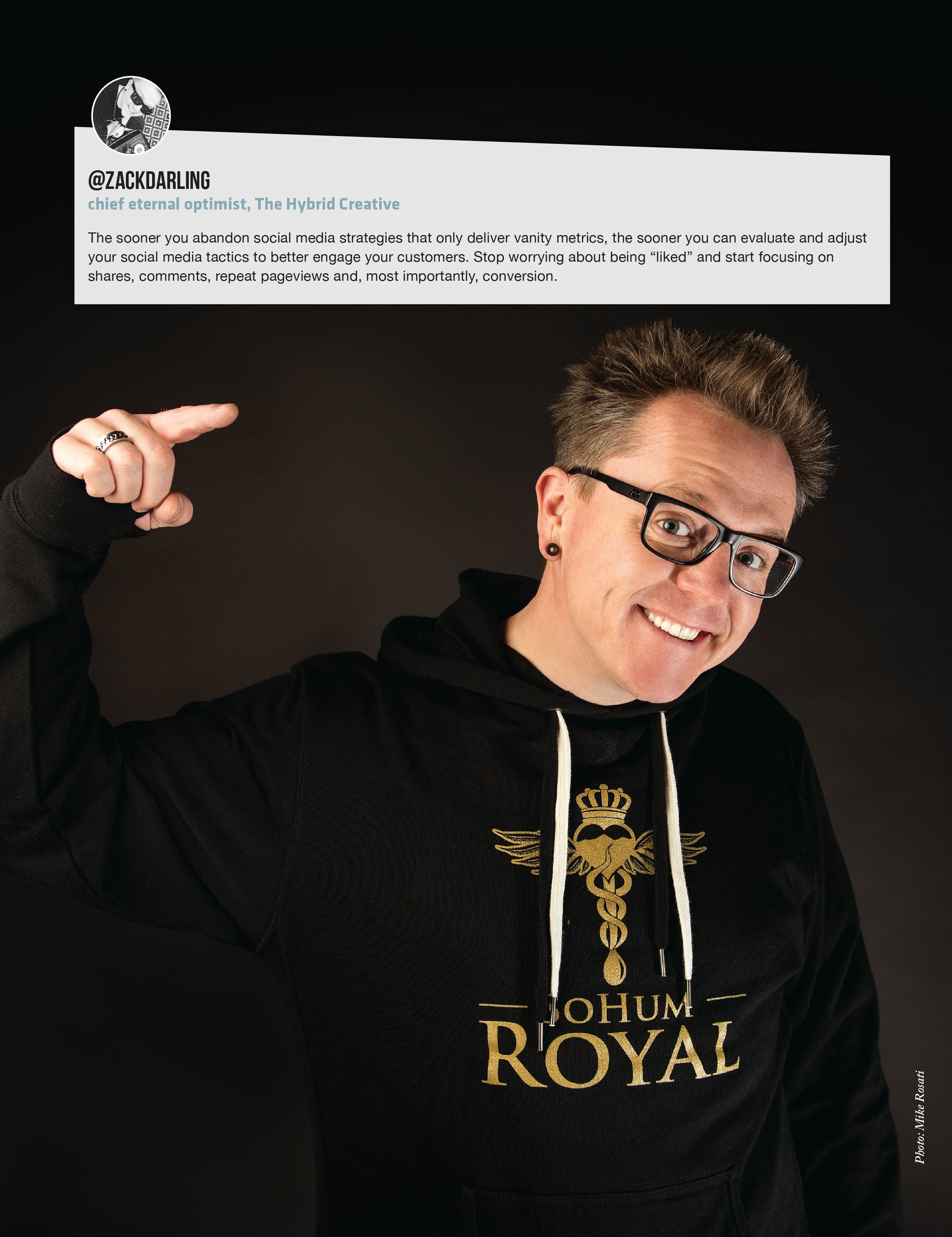
“Good social media strategy is no different from good brand strategy,” said Zack Darling, chief eternal optimist at The Hybrid Creative. “What is most important is that you resonate with your audience. If they discover alignment with your brand and choose to love what you stand for, they won’t just become new customers—they’ll become loyal fans. That kind of brand loyalty is priceless.”
Michael “BigMike” Straumietis, founder and chief executive officer of Advanced Nutrients, has spent years adroitly developing his personal brand on social media. “A personal brand is something that applies to everyone,” he said. “It’s your uniqueness. Your edge. It’s how you set yourself apart.

“If you want people to engage with you, you first need to hook them,” he added. “Put yourself in their shoes and target their pain points. Understand what your product does differently from other brands and how your product alleviates their pain points where competitors failed.”
Differentiation is key, according to Mirsky. “A big issue in [cannabis] social media is that everyone looks the same,” he observed. “If you all look the same, what is going to make you stand out?”
He believes more people should invest in video. “The thing most brands fail to do is develop campaigns beyond a static image,” he said. “But video content is huge. It gets great engagement and, unfortunately, there aren’t enough companies creating video content, which offers a much easier way to tell a story in a shorter period.”
Whether photos or video, the content must be purpose-driven, not aimless. “Do not just put content out there for content’s sake or put images out there and say, ‘Do you think it’s pretty? Like it. Tell me what you think,’” said Mirsky. “Put content out there that has very specific intentions, very specific goals.”
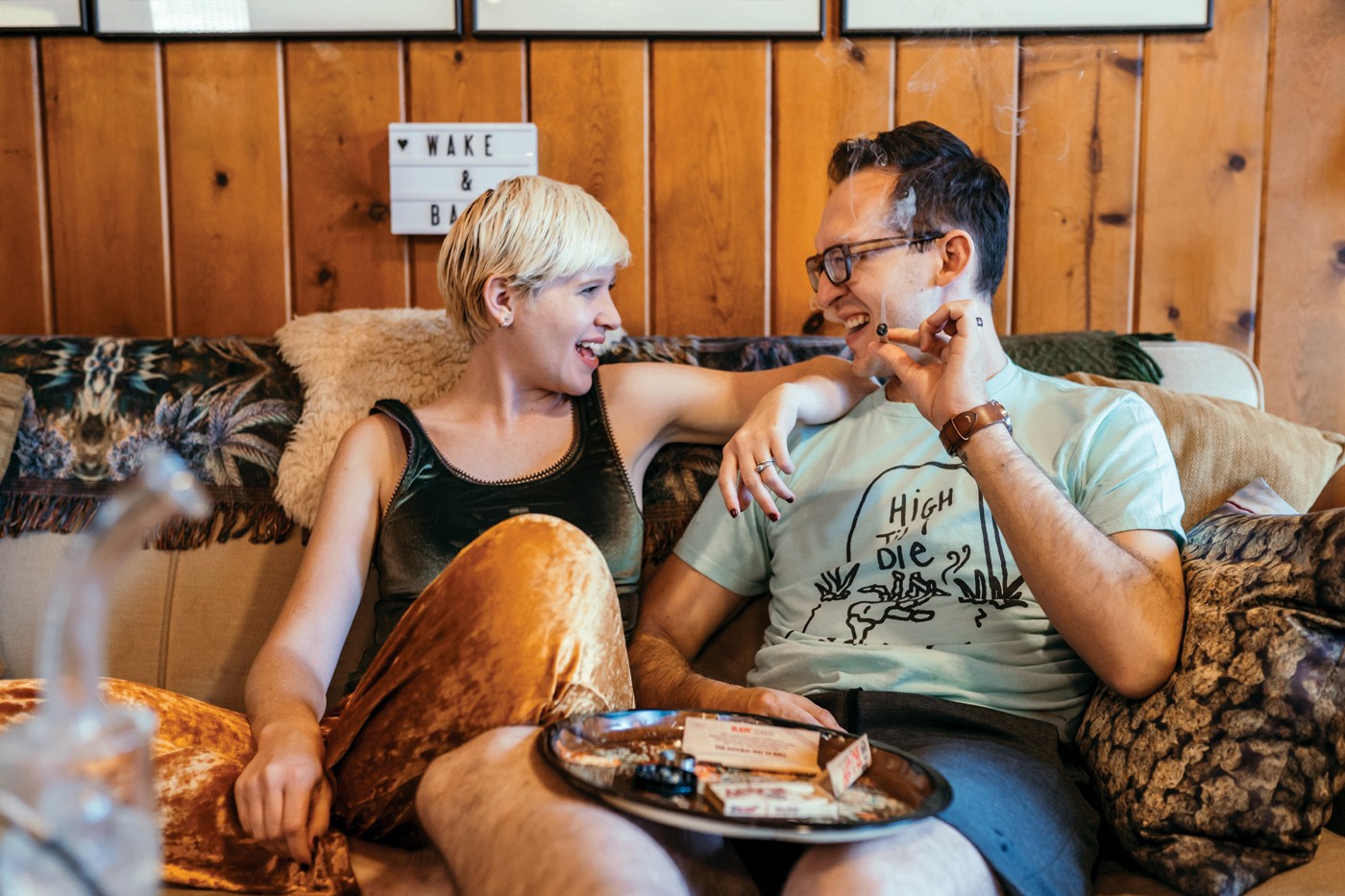
“What makes the fastest connection with strangers online: They see something of themselves in you.” —@ThatHighCouple (Alice & Clark)
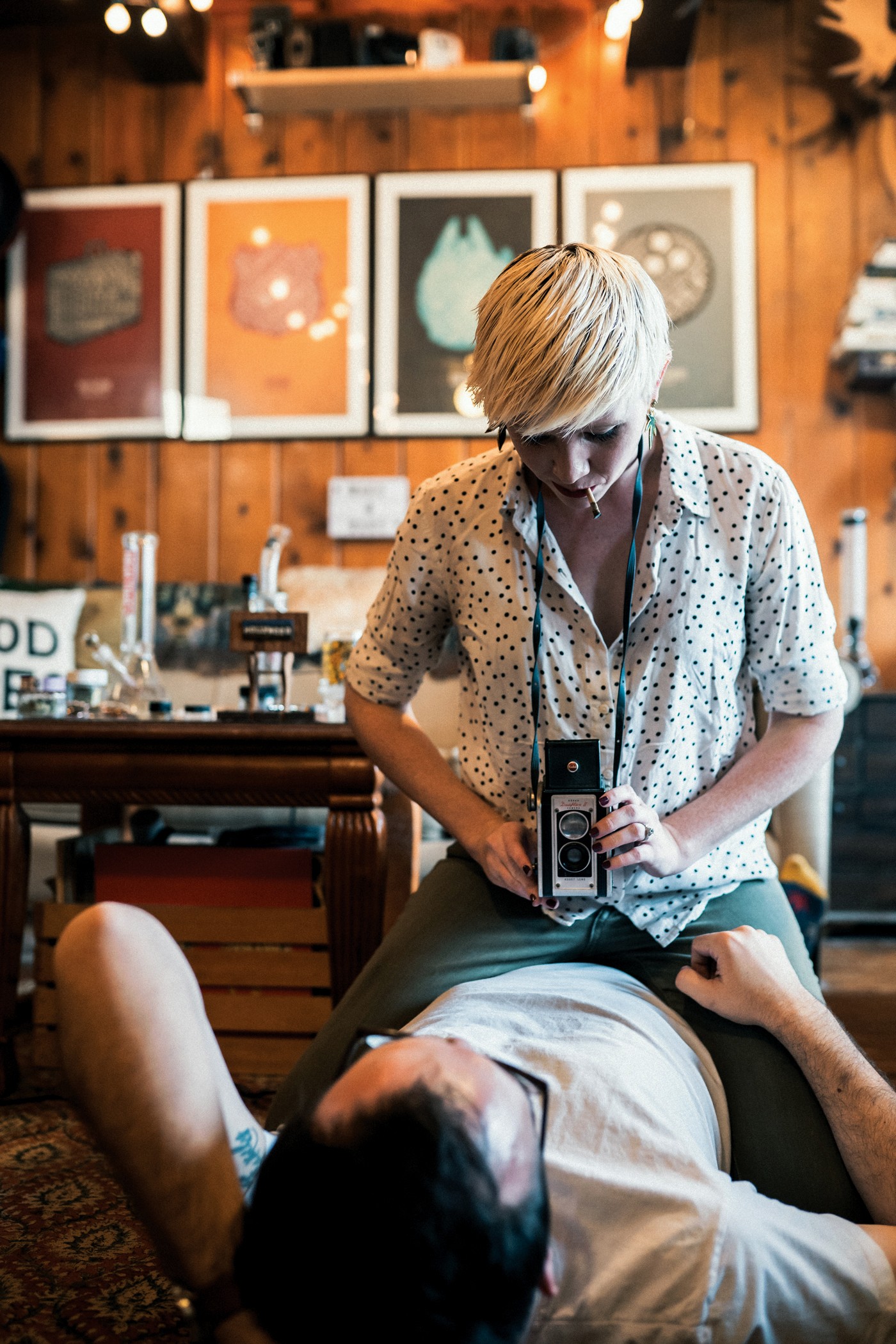
Specificity, originality, and authenticity are mantras in social media content creation and the holy grail of creation everyone aspires to achieve. Alice and Clark are popular cannabis influencers and YouTubers who make content that sometimes shows off their silly side. “Our top-performing video is ‘100mg vs. 1000mg Edibles Challenge,’” said Clark. “I think that’s a great example of not only a topic people are interested in, but it’s a versus video. It’s both entertaining and also has an educational angle to it. A lot of people are watching for the education of what it’s like to be on that much edible. The authenticity comes from us reacting as real as we could. People see we’re being totally real with this.
“That’s what I find makes the fastest connection with strangers online: They see something of themselves in you, and you only get that connection by first being true to yourself,” he added.

According to influencer D.M. Blunted, “If you have a lot of people following you, they’re following you because they like what you are doing. For whatever reason, you should let people know more of your ideas, how you feel about what’s going on—especially your thoughts on what’s going on in cannabis, because people are probably following you because they want to know about it.”
Mike Smith runs GanjaGirls, which counts 620,000 followers on Instagram and more than 400,000 followers on Facebook. The content he creates for GanjaGirls features sexy young women as scantily clad as possible enjoying the copious benefits of cannabis. He said he’s received a lot of blowback from the industry.

“The industry said I was objectifying women. I’m empowering women,” he insisted. “Women in the marijuana industry are the most powerful influencers, not men. Women make all the decisions. Now, there’s a pink bong. Try finding a pink bong in 2008.” Nevertheless, “a lot of the strong female influencers hate me,” he said. “The farmer girls in Humboldt hate me. They’ll say, ‘You need to post pictures of real ganja girls, like us farmers.’ Victoria’s Secret doesn’t post pictures with the ladies sewing the clothes. That’s not who sells it. If there weren’t pictures of the models wearing the clothes, the person sewing them wouldn’t have a job.”
Straumietis has been answering media questions about scantily clad women on his feed since he began posting. Huffington Post crowned him “the new King of Instagram” in a February 2017 interview that asked about his literally high-flying lifestyle.
I like to have fun when I do business,” he told the interviewer. “When I have events that require travel, we take a private jet and load it with girls. We like to have fun while we’re working.”
Two years later, @BigMike, which boasts 2.9 million followers, has evolved. BigMike the veteran entrepreneur and mentor has replaced BigMike the playboy. “Without a doubt my Instagram feed has come a long way since its inception,” he said. “At first I showcased more of the lifestyle aspect of my brand, which was just one facet. Now, I focus more on educating, motivating, and inspiring my audience, because I believe it’s important to share my knowledge with the community or any budding entrepreneurs hungry for intel.”
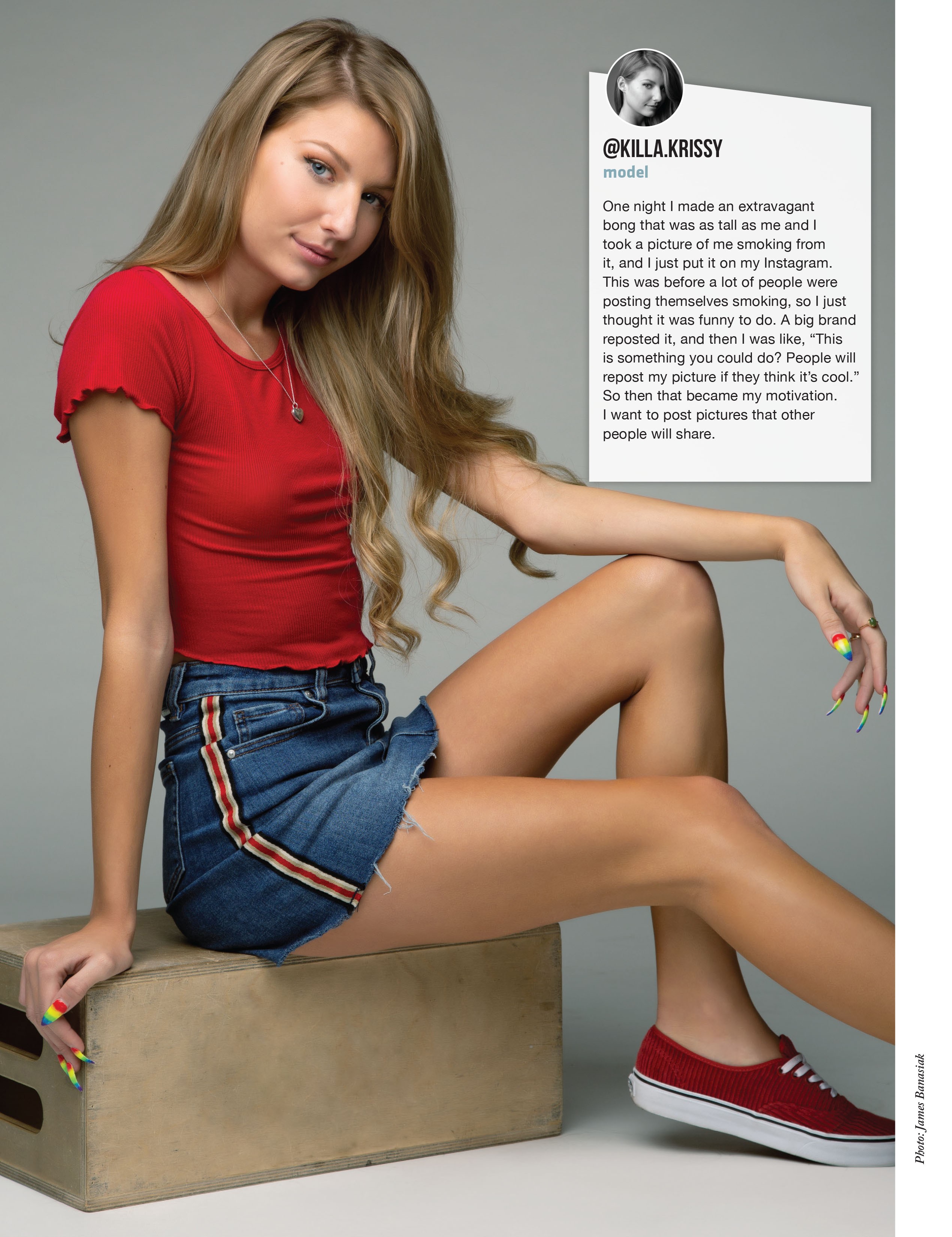
Influencer nation
“Influencers are the modern spokespeople,” said CCTV’s Keith. “They are brand ambassadors and invaluable in the cannabis space. A huge amount of marketing takes place on Instagram, and to be able to reach consumers using this type of engagement is key. We can track engagement in real-time and adjust our strategy to reach our target audience. Our advertisers really benefit from the way we target influencers. It expands their reach and helps build brands.”
Cannoli is himself a brand that creates educational content online and in person. If he’s uneasy with the label “influencer,” he’s certainly not uncomfortable in the spotlight. “Social media fame is such a strange thing,” he said. “On the one hand it can be a mindless soap opera diversion, and on the other there is the opportunity to share, educate, and create community. We’ve been blessed by so many great interactions: people making their own temple balls and sharing their successes, people celebrating the benefits of the cannabis plant, and people connecting and joining us at events in places all over the world.”
Straumietis agreed authenticity is key. “Influencers are a part of advertising in the cannabis space, but they have to be authentic,” he said. “They’re great for marketing your products to niche audiences, because they are already embedded and trusted within that community.”
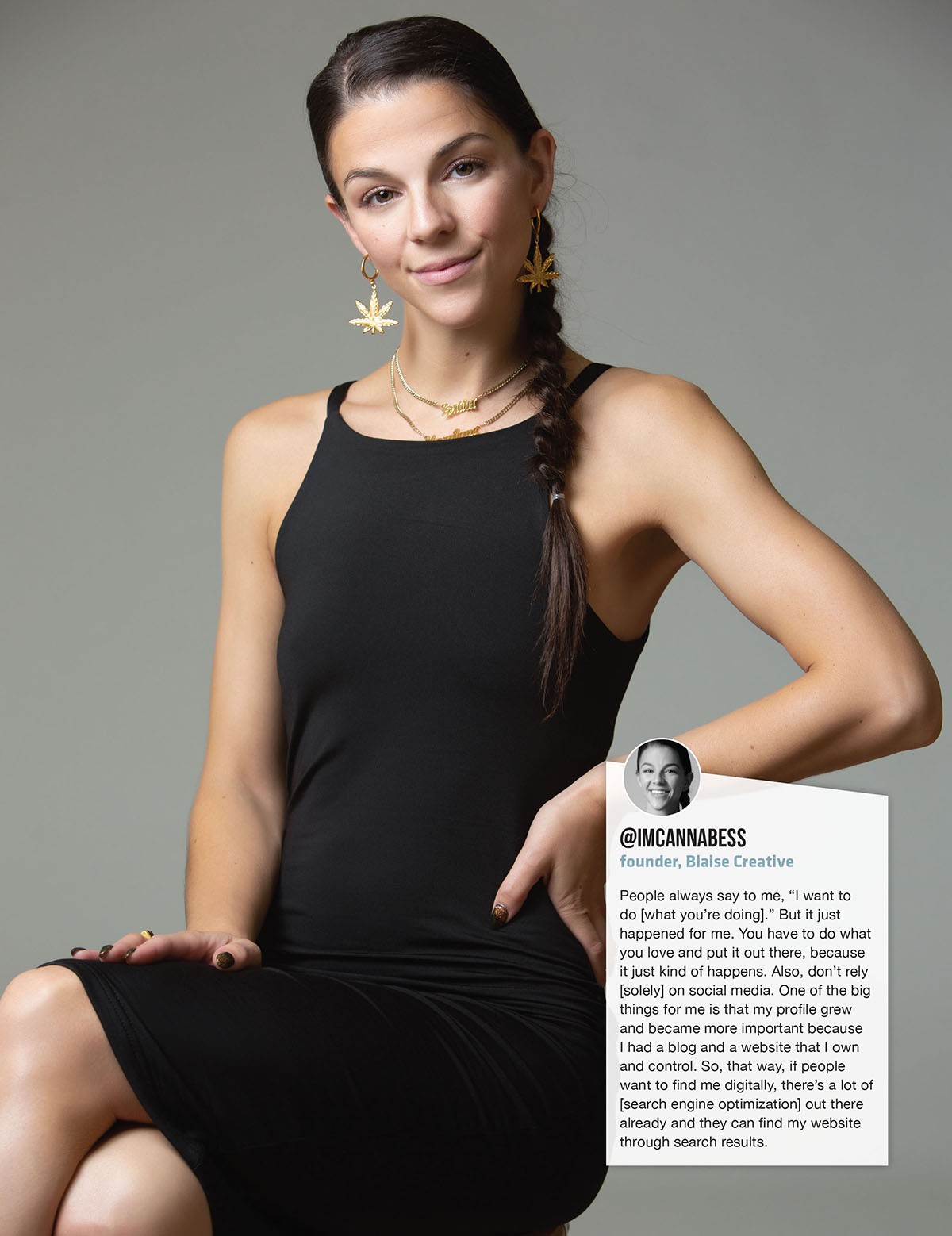
Because the product is cannabis, people sometimes find their social media accounts closed. “My heart kind of sank,” said influencer Bess Byers about the first time her account, @imcannabess, was removed from Instagram. “It’s just an awful feeling. It means more work, uncertainty whether it will come back, are they even going to reply? I just started filing appeals to get it back and got it back. Then they took it down again, and it’s just been back and forth for the past two and a half months.
“I never in a million years thought I would be in this position, doing what I’m doing, putting bags of weed pictures on my LinkedIn profile for all people to see,” she said. “My super-Catholic mom is telling people at church about it. My grandmas are using topicals. It’s amazing. Still, having my account deactivated so many times is frustrating. It can be very draining on your emotional health, because it is something like a community of 96,000 people just taken away like that.”
Social media users should bear in mind networks broadly prohibit promoting illegal acts, including drug use. Cannabis remains an illegal drug in many places, so the sudden disappearance of some especially high-profile accounts is inevitable. “You could totally harm your brand by posting stuff you don’t realize you’re not allowed to post, like people smoking cannabis,” Mirsky said. “It’s no different from alcohol laws and rules. You can’t post stuff like that.”
In search of ROI
For better or worse, social media is here to stay, because you can never put a piece of technology or an idea back in the bottle. Its influence in our lives is beyond measure. Young people live on social media while old people tend to visit. A coexistent plane of existence, we now accept social media as inevitable. Influencers, who are like the webcam performers of social media, minus the sex, also are here to stay. Their job is to connect. It’s all a work in progress.
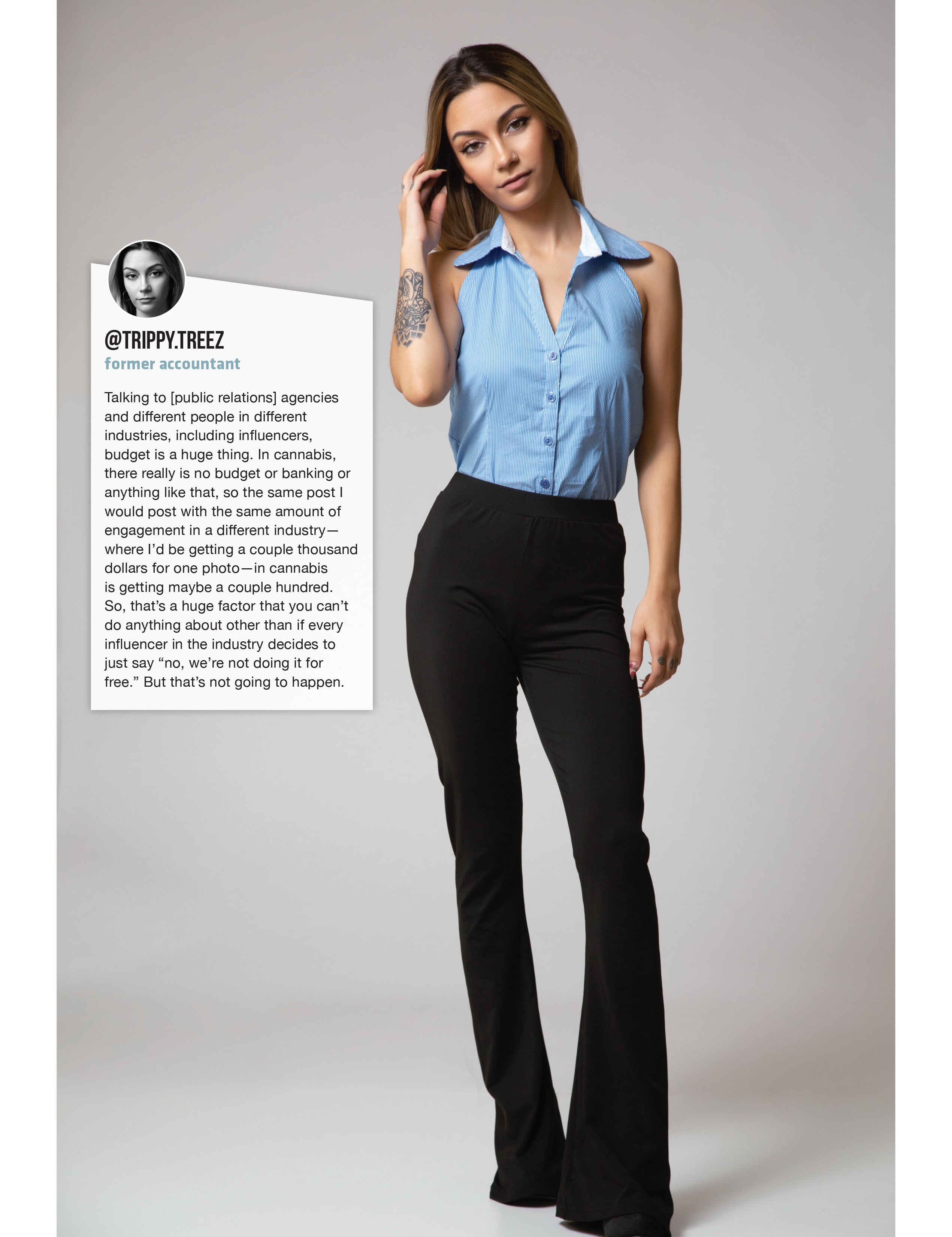
“Influencing is no different in any industry,” said influencer Trippy Treez. “It’s still a learning game for everyone. The beauty industry is still trying to learn this stuff with influencers, too.”
She said she works with more than 400 brands, but compensation is an issue. “Talking to [public relations] agencies and different people in different industries, including influencers, it is a huge thing,” she said. “In cannabis, there really is no budget or banking or anything like that, so the same post I would post with the same amount of engagement in a different industry—where I’d be getting a couple thousand dollars for one photo—I’m getting a couple hundred in cannabis. That’s a huge factor that you can’t do anything about other than if every influencer in the industry decides to just say ‘no, we’re not doing it for free.’ But that’s not going to happen.”

Influencer Jennie Diana (@SheFliesHigh) said people need to learn to hold their ground. “If you know your worth and what you can offer, what you can bring to the table, anything is negotiable,” she said. “Don’t ever be afraid to offer your services for a certain amount and don’t ever feel like, ‘Oh my gosh, what if this is too high and they don’t hire me?’”
She said it is the same with taking on clients. “My advice for people who want to start growing their accounts is to reach out to anybody and everybody you’re interested in,” she said. “Never accept offers from just anybody, because opportunities will come. You have to stay true to yourself, because your vibe attracts your tribe.”
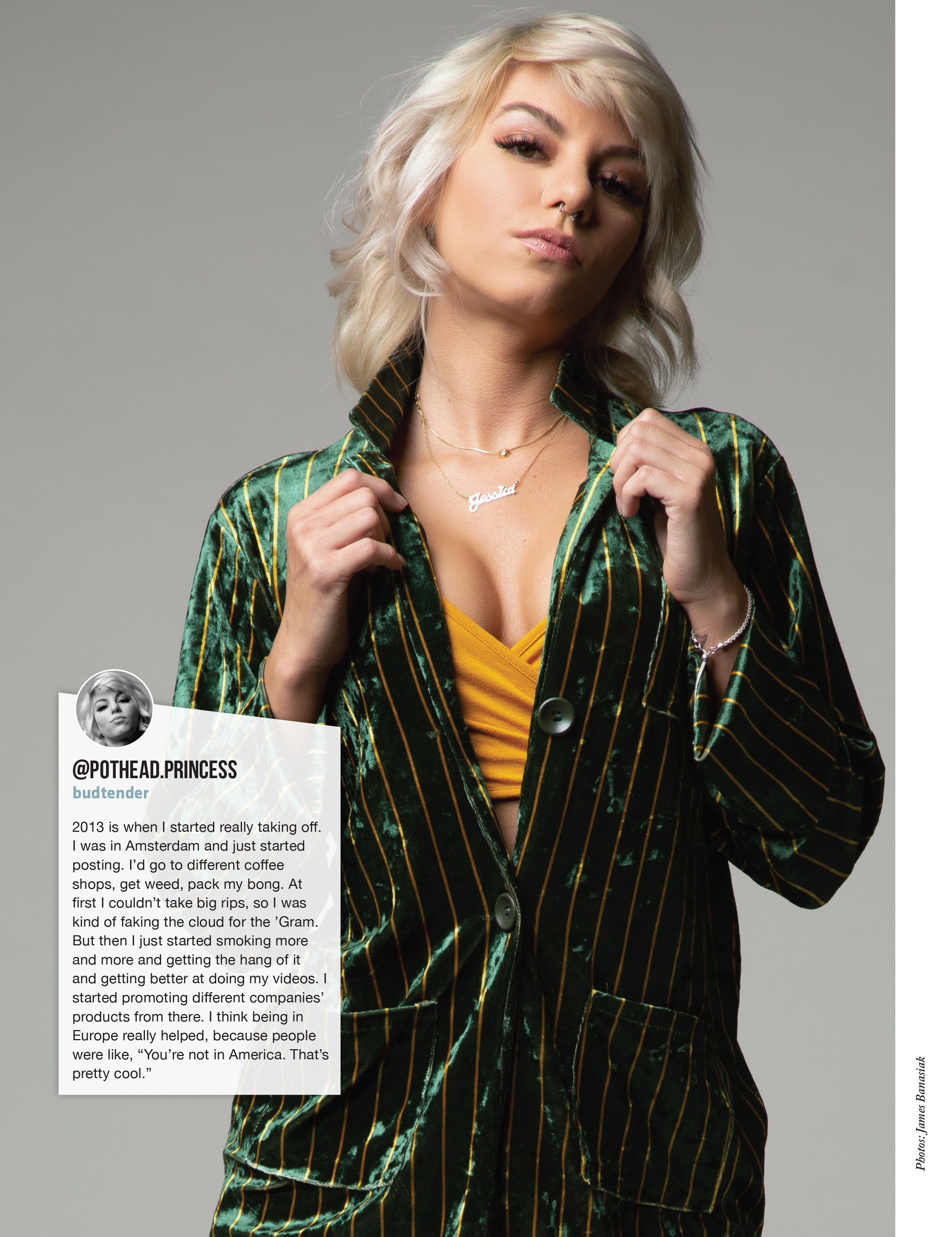
That belief seems universal. “I’m always trying to make sure that if I am working with you, I want to make sure you’re putting good intent into the cannabis [space] and trying to make it better, just like I am,” said D.M. Blunted, who sees herself as an advocate rather than an influencer. “What is an influencer if they’re not trying to influence people beyond buying things? To me, the word influencer is almost empty at this point, because what are you influencing?”
Company owners want sales to be influenced. Advanced Nutrients’ Straumietis takes a data-driven view of how the milieu is working for him. “You absolutely need to measure your social media presence if you want to know how engaged and connected you are to your audience,” he said. “Our main indicators for measuring social media success include engagements, web clicks, and followers, and we also track web analytics to find out how many conversions we’ve made through our social media posting. Conversions are your metric for determining how effective engagement is at translating your social media presence into sales. If your presence isn’t generating more sales, then it’s time to rethink your social media marketing strategy.”
The Hybrid Creative’s Darling was in complete agreement. “The sooner you abandon social media strategies that only deliver vanity metrics, the sooner you can evaluate and adjust your social media tactics to better engage your customers,” he said. “Stop worrying about being ‘liked’ and start focusing on shares, comments, repeat pageviews and, most importantly, conversion.”
At the end of the day, divining accurate return on investment in a digital environment entails meticulous planning and testing, which requires time and patience on the part of the marketing entity. It’s possible to do, though. That should be good news to social marketers, 55 percent of whom cited measuring ROI as their number one challenge in 2018, according to data from Sprout Social.
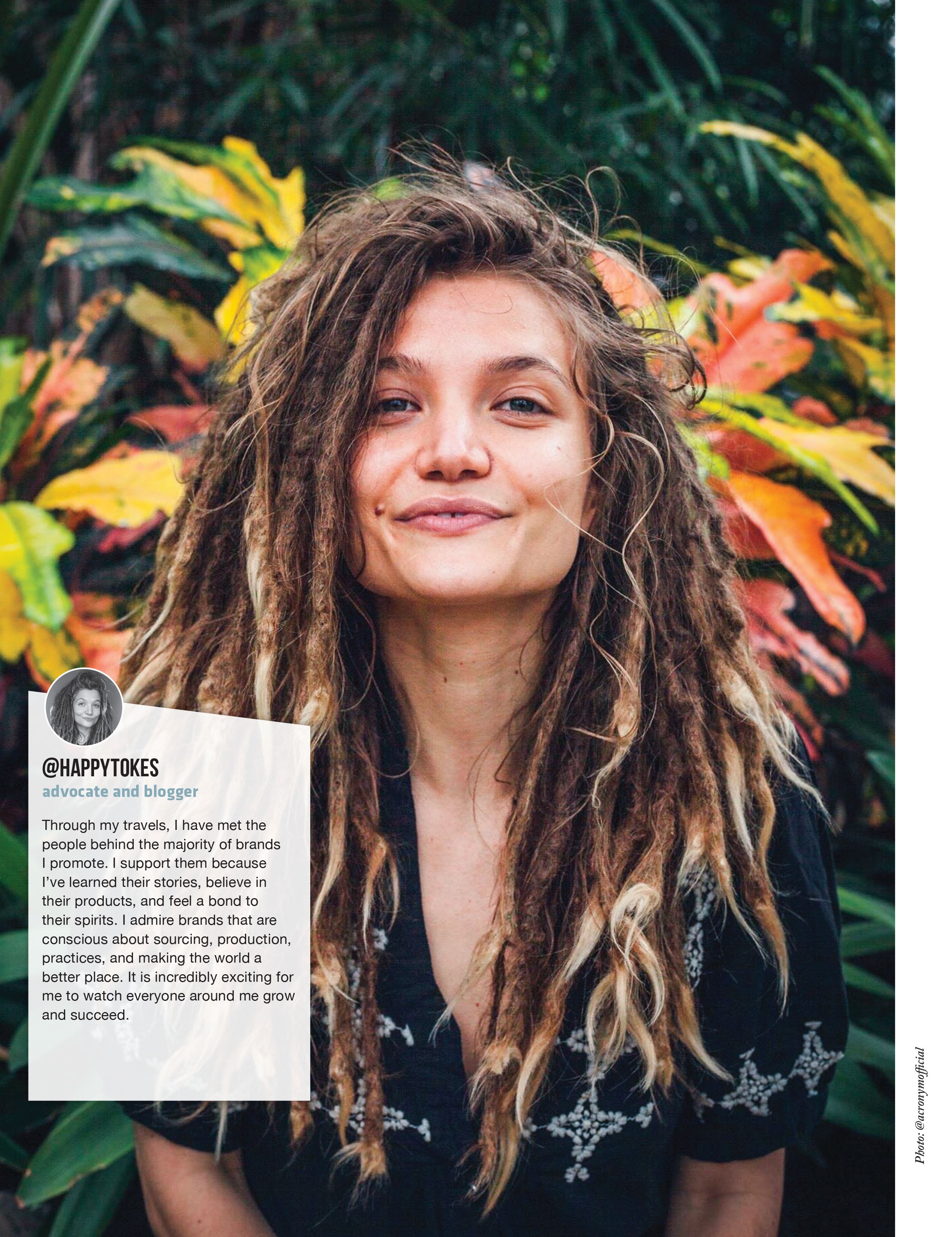
“For the sake of efficiency and accountability, businesses must define and measure their social ROI,” the company noted. “This does double duty of ensuring your campaigns are focused on goals and your resources are going to the right places.”
To further that end, SproutSocial.com offers a guide to help marketers define social media ROI subject to their “unique online presence.” Basic steps include defining the purpose of social media for your brand, setting actionable social goals, measuring those goals, and tracking social media expenses.
Even if it is not directly quantifiable, keeping an eye on social media causation reaps benefits. Shine Papers, for example, uses social media to promote its annual Shine Day international scavenger hunt. A spokesperson for the company said while they cannot directly quantify the effect social media has on their sales, every time they conduct a major social media campaign (like Shine Day), they see an increase in sales on their website.
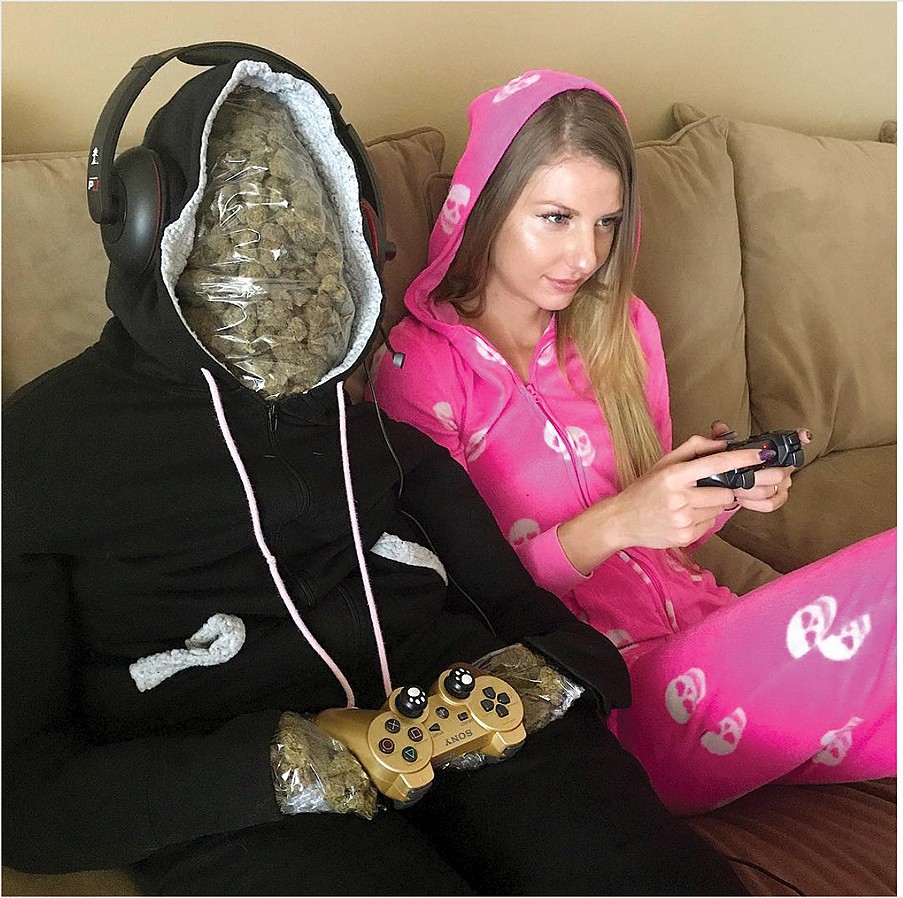
“Post pictures that other people will share.” —@Killa.Krissy
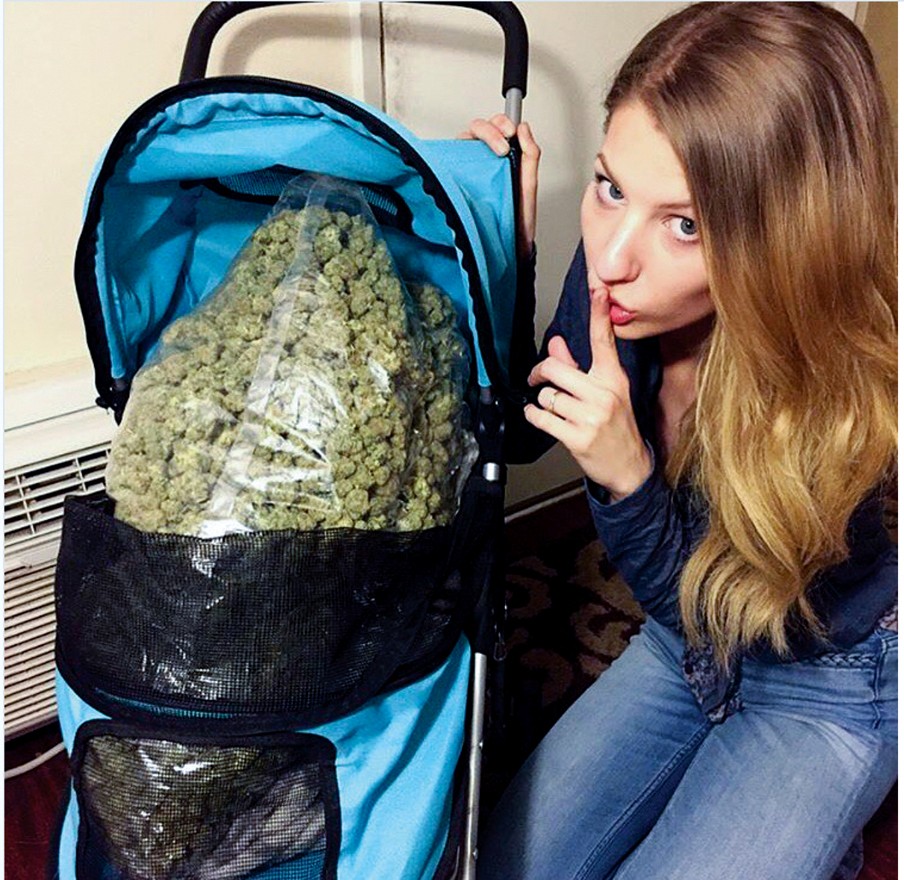
Logging on
As we go to press, rumors are swirling that Facebook is moderating its policy toward accepting cannabis advertising. “We want to consider whether we can loosen this restriction, especially in relation to medical marijuana, legal marijuana, and brick-and-mortar stores,” company officials reportedly remarked during an internal presentation in early March. By the time you read this, the rumor may have become fact and a new day in cannabis marketing will have arrived. A moderate policy inevitably will arrive, and people need to prepare for a world in which hyper-cannabis branding extends across all platforms utilizing the latest advances in technology.
“The next trend in cannabis-related marketing is, in two words, artificial intelligence,” noted Amanda Lewis, marketing manager at The Hybrid Creative. “Because cannabis brands will need to continuously evolve and deepen their understanding of their core and prospective customers, social listening platforms, intelligent messaging, and chatbot technology will evolve to meet the new demand, enabling brands to serve up the right content at the right time.”
AI may be the future, but leading publicly traded companies like Canopy Growth and Aurora still use traditional mainstream media to promote themselves, including broadcast television, where the cable business networks regularly cover publicly traded cannabis companies. One can be sure that when activist billionaire investor Nelson Peltz, who joined Aurora in March, wants airtime, all he will have to do is make a call and CNBC will put him on live. For Peltz and his ilk, broadcast media remains king.
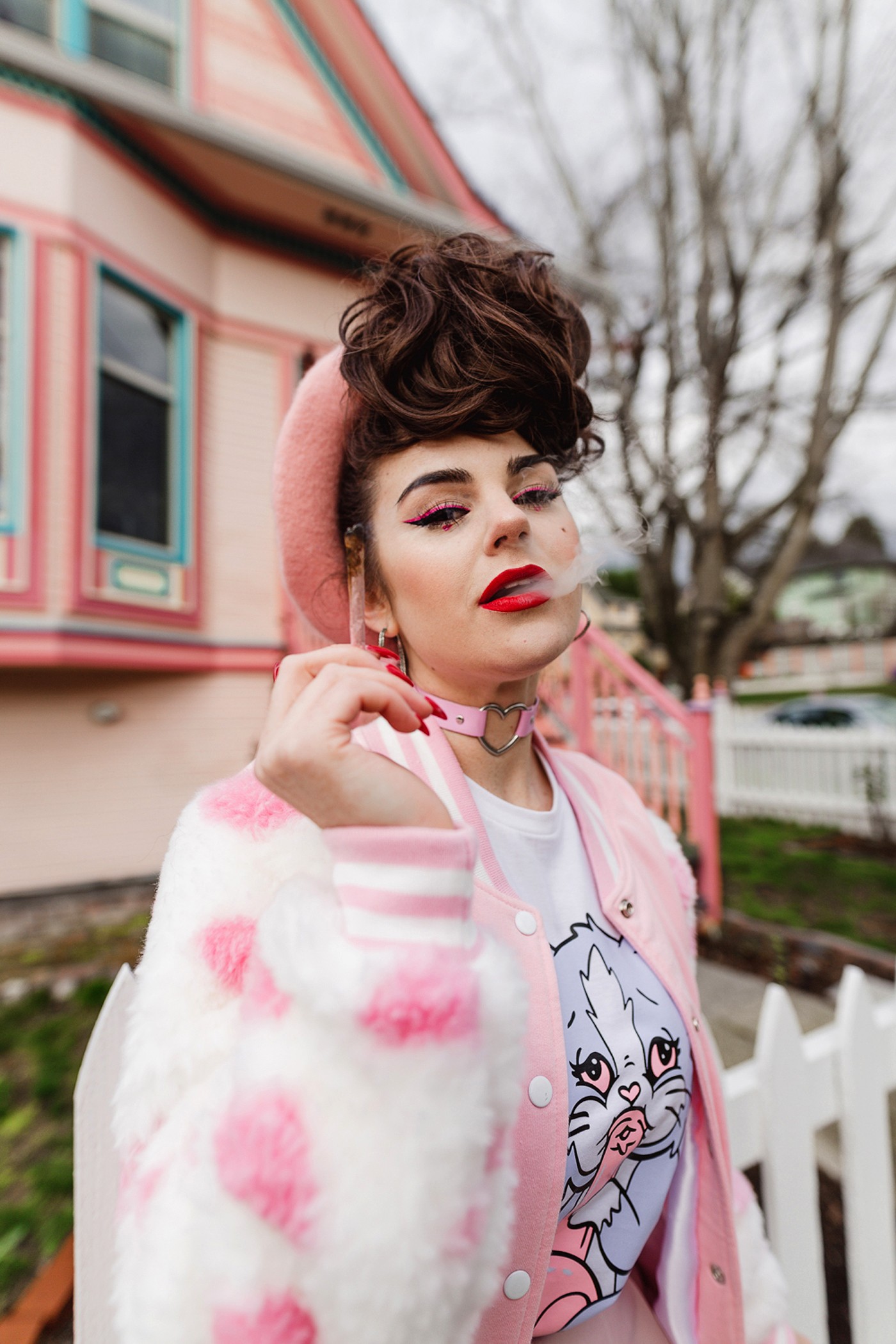
“YOU HAVE LESS THAN 10 SECONDS TO CATCH THE EYE OF THE VIEWER.” —@BangKittyBang
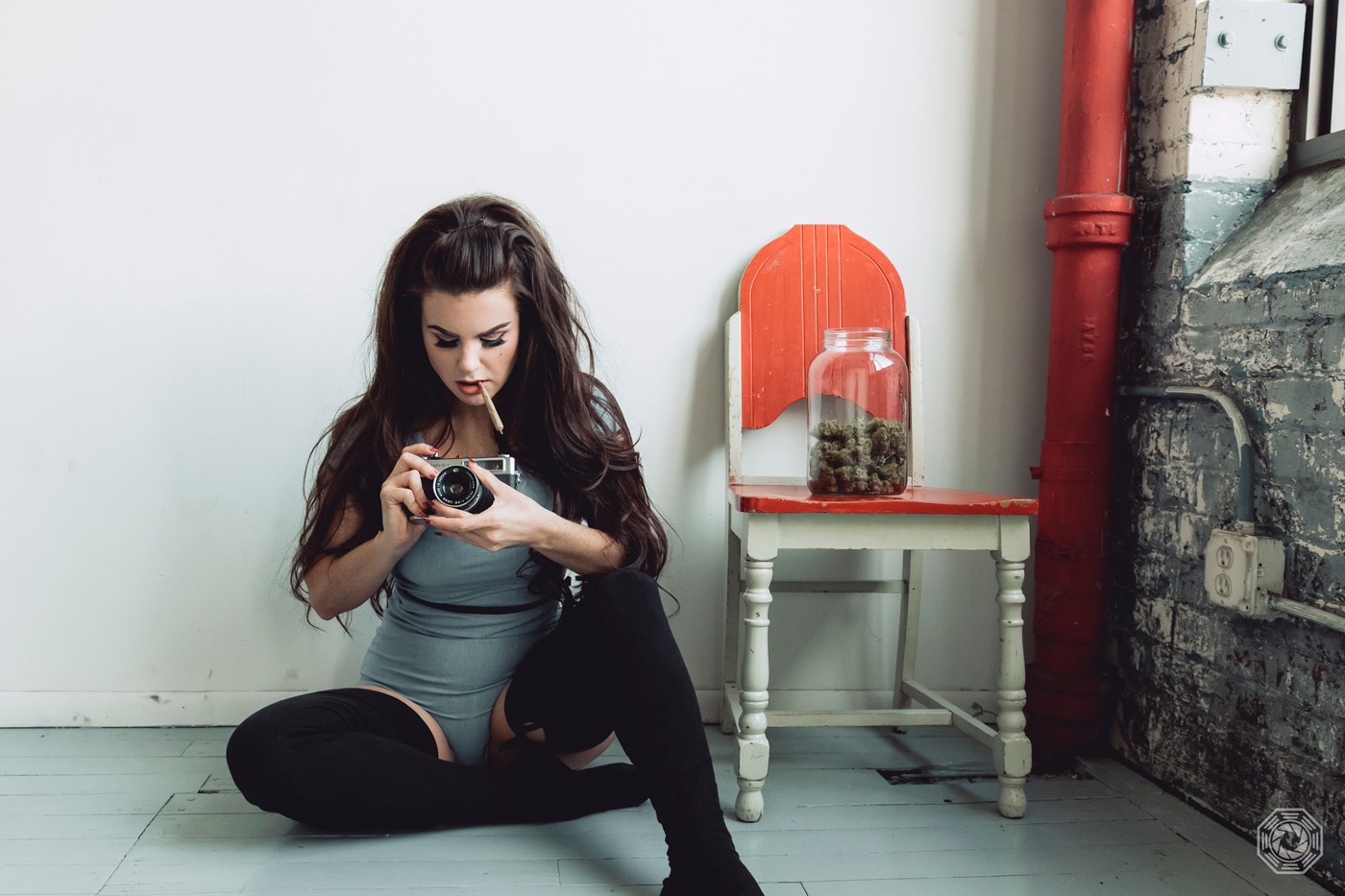
The rest of us will continue to use social media, AI, and whatever comes next as the latest essential tool of success in a digital world. Look at it this way: In the race to win the loyalty of cannabis consumers, do Canopy Growth or Aurora, with their billions of dollars in market cap, have an advantage over everyone else? Let’s test the assumption they do. Can our American readers name one Canopy Growth or Aurora brand off the top of their head? Probably not, and not because the corporations don’t have quality brands in their portfolios but because established cannabis brands at the national level simply do not exist yet.
Some marketers believe creating a nationally branded CPG (consumer packaged goods) product takes ten to fifteen years, which means we still have years to go before we see cannabis brands that resonate at that level of engagement. Knowing as we do that the increasing power and reach of social media helps level the playing field for brands looking to grow and compete in ever-larger markets, and that impending technologies will only level the field even more, we have just one question for cannabis brands still considering whether to invest in social media marketing: What are you waiting for?
Making Social Media Campaigns Work
Between November 2018 and January 2019, web data analytics company Talkwalker (@Talkwalker) surveyed a global sample of 823 brands and digital marketing agencies about their use of social media campaigns.
Here are some of the things the survey uncovered.
69% of respondents ranked influencer marketing as an important or top strategic priority.
62.7% of digital marketing pros track, evaluate, and manage campaigns manually instead of using digital tools.
65.8% of agencies and brands listed increasing brand visibility as their number one goal for social media campaigns.
16.9% of agencies and brands seek increased lead-generation and sales from social media campaigns.
4.2% of brands use social media to increase customer loyalty.
How much do brands spend on social media marketing?
24% of all respondents and 57% of brands with more than 500 employees spend $30,000 or more per year.
19% of all respondents spend between $2,000 and $10,000 per year.
17.4% of all respondents have no budget.
(Additional reporting by Linda Friedman)











